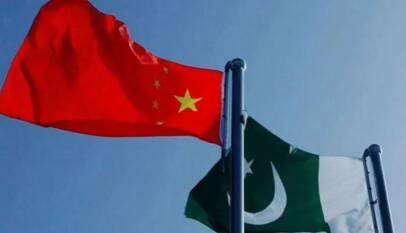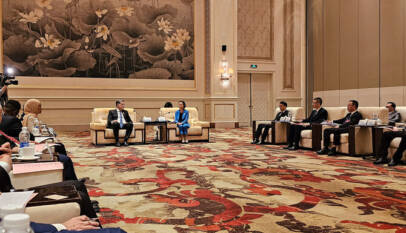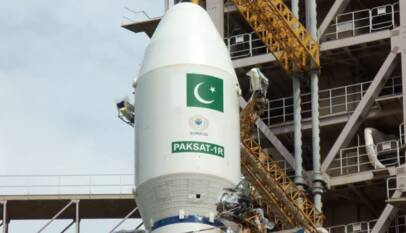CPEC 10th anniversary: What lies ahead
The article by Mustafa Hyder Sayed, the Executive Director of the Pakistan-China Institute, commemorates the 10th anniversary of the China-Pakistan Economic Corridor (CPEC) and highlights the successful completion of its first decade. The ceremony in Islamabad was attended by Chinese Vice Premier He Lifeng, who read President Xi Jinping’s congratulatory letter reaffirming China’s unwavering support to Pakistan’s core interests. Since its launch in 2013, CPEC has attracted significant Chinese investment, with over $25 billion already invested and a projected total of $62 billion by 2030. The project has brought about significant developments, including the construction of motorways, creation of jobs, scholarships for Pakistani students, and resolving the energy crisis. CPEC has strengthened economic ties and promoted regional peace and stability. The article emphasizes the natural evolution of the Pakistan-China relationship and highlights soft connectivity initiatives, where local communities in Pakistan have been actively involved in CPEC projects. Mr Sayed believes that even greater collaboration is possible, with Pakistan positioning itself as an attractive destination for Chinese industries seeking to relocate, which could boost export-led growth and reduce reliance on international financial institutions.
In an impressive ceremony on July 31 to mark the successful completion of 10 years of the China-Pakistan Economic Corridor (CPEC), China and Pakistan commemorated the completion of the first decade in Islamabad. Chinese Vice Premier He Lifeng, who key-noted this ceremony as the special envoy of Chinese President Xi Jinping, opened his address by reading out President Xi’s congratulatory letter. President Xi said no matter how the international landscape may change, China will always stand firmly with Pakistan, underscoring the iron-clad friendship shared between the two countries. President Xi’s letter is a reminder of the steadfast and unwavering support of China to Pakistan’s core interests, be them economic, political, or security, and vice-versa.
Since the launch of the project in 2013, CPEC has attracted more than $25 billion in direct Chinese investment, which is expected to increase to the size of $62 billion by 2030. The investments from CPEC have helped construct over 500 kilometers of motorways, created approximately 200,000 direct jobs, given 28,000 scholarships to Pakistani students to study in China, and added 6,000 megawatts of energy to the national grid through CPEC power plants that have helped end Pakistan’s energy crisis. CPEC has become a landmark of China-Pakistan cooperation. The construction of the CPEC has achieved many milestones, further enhancing economic ties between the two countries and promoting regional peace, stability and prosperity.
The advent of CPEC was a natural evolution of the Pakistan-China all-weather relationship. Both countries have shared close ties from their inception, Pakistan being the first Muslim country to recognize the People’s Republic of China, and also midwifing the U.S.-China detente by using its statecraft to facilitate Kissinger’s visit to China, which eventually led to diplomatic relations between both the countries.
China too has been consistent in supporting Pakistan’s sovereignty and defended Pakistan every single time in the United Nations Security Council. A key aspect of the Belt and Road Initiative and particularly CPEC is the soft connectivity that brings with it, not only the quintessential “brick and mortar.” In Pakistan, local communities have been made a part of the CPEC, in one way or the other. For example, the port city of Gwadar now has China-Pakistan Faqir Primary school that has the girls of the port city (mostly daughters of poor fishermen), now getting an education, thanks to a grant from a Chinese foundation and additional support from China Overseas Port Holding Company that is operating the Gwadar Port.
Another example is from the desert city of Thar in Sindh province, where female residents are often underprivileged and less educated and the local people lacked substantial sources of livelihood. After the Shanghai Electric, China Machinery Engineering Corporation along with a Pakistani company, Engro, set up power projects in Thar, women there can drive dumper trucks, and also supply meals to the companies that are operating there – both jobs which have empowered the women and alleviated them from abject poverty.
As we celebrate the 10 years of CPEC and appreciate its achievements, I still think Pakistan and China can do greater things together, and the best is yet to come. Many Chinese industries are relocating to frontier and emerging markets as the cost of production in China increases as well as their appetite for lower transit and transport routes, Pakistan should position itself as the most conducive destination for the relocation of Chinese industries, which has the potential to drive Pakistan’s export-led growth, increase it’s foreign exchange reserves and reduce its reliance on the Bretton-Woods institutions.
Chinese Ambassador highlights significance of Third Plenary Session for China-Pakistan cooperation
The Third Plenary Session of the 20th Central Committee of the Communist Party of China ha…












